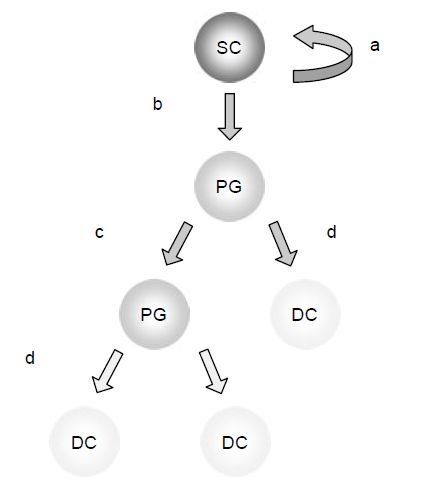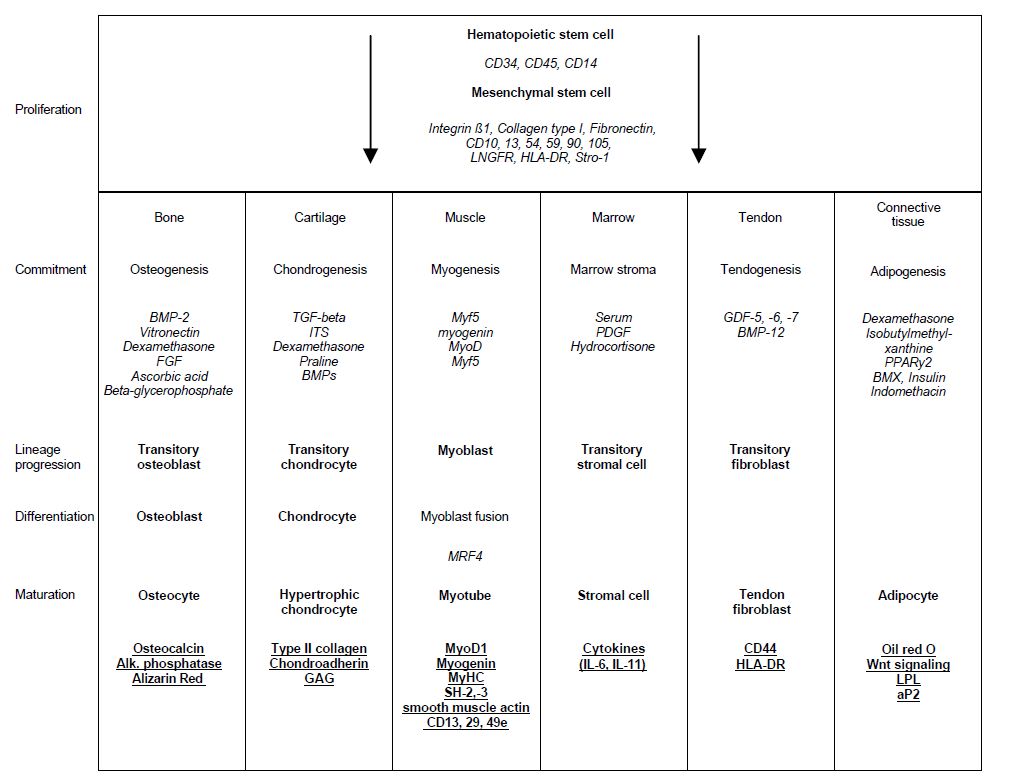
Embryonic Stem Cells
 المؤلف:
John M Walker and Ralph Rapley
المؤلف:
John M Walker and Ralph Rapley
 المصدر:
Molecular Biology and Biotechnology 5th Edition
المصدر:
Molecular Biology and Biotechnology 5th Edition
 الجزء والصفحة:
الجزء والصفحة:
 28-12-2020
28-12-2020
 1856
1856
Embryonic Stem Cells
For over 20 years, researchers have been able routinely to extract and cultivate mouse embryonic stem cells. This cultivation expertise has also permitted the isolation and cultivation of human embryonic stem cell lineages. Embryonic stem cells are non-specialized cells which are found in the inner cell mass of 7–30-day-old blastocysts or embryos. At this stage of development, the three main cell lineages of ectoderm, mesoderm and endoderm have not yet formed. Thus, embryonic stem cells are pluripotent and are able to differentiate into every cell type of a tissue or organism. This is one of the most important advantages for tissue engineering when considering suitable cell types. Compared with adult stem cells, embryonic stem cells are capable of long-term renewal without differentiation, thus allowing the production of the cell mass required for tissue engineering applications.
As a general rule, a stem cell can do one of the following: divide and generate a new stem cell or differentiate into a particular tissue lineage (Figure 13.1). Symmetric division gives rise to two identical daughter cells, both endowed with stem cell properties, whereas asymmetric division produces only one stem cell and a progenitor cell with limited potential for self-renewal. Progenitors can go through several rounds of cell division before terminally differentiating into a mature cell. The switch between division and differentiation is usually triggered easily by external factors such as the cell environment, hormones or signals from neighboring cells. As a result, it is difficult to expand embryonic stem cells in culture without them differentiating spontaneously in one direction. Therefore, embryonic stem cell cultures must be monitored carefully and continuously. Due to lack of knowledge, the research community has not yet established a protocol for the absolute and complete characterization of stem cells, although the following methods are commonly used simultaneously to ensure that the cells display the required stem cell traits:
- visual characterization by microscopy;
- formation of embryoid bodies;
- analysis of surface markers, such as the stage-specific embryonic antigen (SSEA)-3, SSEA-4, TRA-l-60, TRA-1-81 and alkaline phosphatase;
-determination of whether Oct-4 – a transcription factor typical of undifferentiated cells is expressed and whether cells display high telomerase activity;
- long-term cultivation to ensure long-term self-renewal, a special characteristic of embryonic stem cells;
- microscopic analysis of chromosome damage;
-determination of whether sub-culturing is possible after freezing/thawing;
- differentiation assays leading to a specific cell type;
-proteomic analysis.

Figure .1 Pathways of stem cells (SCs). SCs often divide asymmetrically, thereby generating a daughter SC (a) and a committed progenitor cell (PG) (b).The PG either divides to produce a PG (c) or fully matures to a differentiated cell (DC) (d).
Using these methods, researchers are in a position to vary and improve culture techniques in order to study the fundamental properties of embryonic stem cells, including the precise determination of why embryonic stem cells are not specialized, how they renew themselves over many years and which factors cause stem cells to undergo differentiation.
The determination of these signals and the chronology of their occurrence are of prime importance for the production of the desired phenotype for tissue reconstruction. To trigger differentiation, the surface of the culture dish, the scaffold, the chemical composition of the culture medium (Figure .2) or the genetic expression pattern of the cells can all be manipulated.
Embryonic stem cells are the only naturally occurring cells that are able to divide frequently enough without manipulation to generate a sufficient number of cells for therapeutic application. Were it not for ethical concerns, restrictions or bans and also the risk of developing
teratomas or rejection by the patient, these cells would be the optimal choice for tissue engineering. Furthermore, we still possess only a rudimentary understanding of most of the differentiation pathways and the culture conditions required to achieve precise lineage control of stem cells. As a result, scientists often obtain differentiated cells, which have a phenotypic resemblance to the cells of a certain tissue but which express not only the usual markers, but also tissue-atypical proteins and do not fulfill all the functions of the native cells in a tissue.

Figure .2 Mesengenic process, differentiation factors and markers of mesenchymal stem cells (MSCs). The value of MSCs for tissue engineering is apparent after analysis of the different cell types that can be obtained. The diagram displays the stepwise cellular transition upon induction with differentiation factors (italic) from MSCs to highly differentiated phenotypes expressing characteristic cell markers
 الاكثر قراءة في علم الخلية
الاكثر قراءة في علم الخلية
 اخر الاخبار
اخر الاخبار
اخبار العتبة العباسية المقدسة


